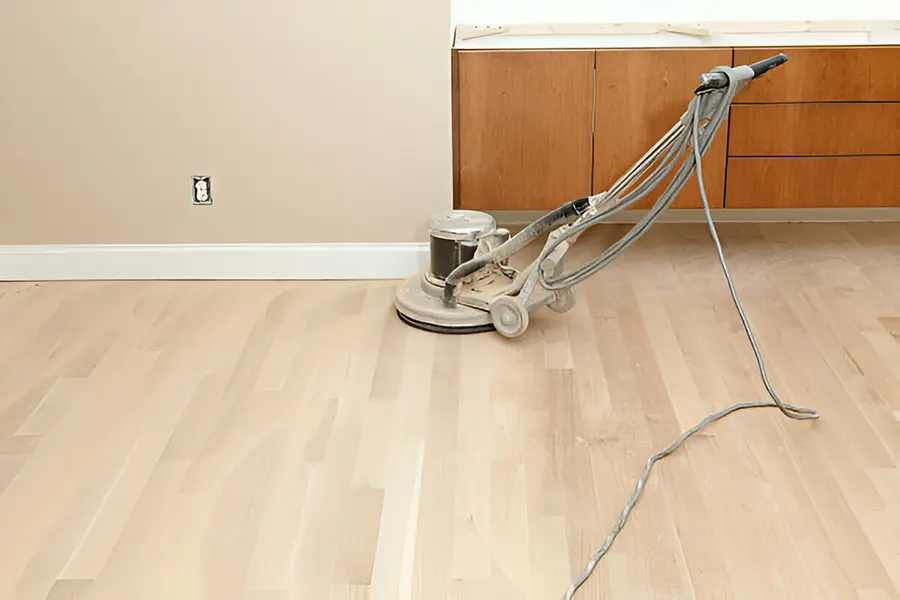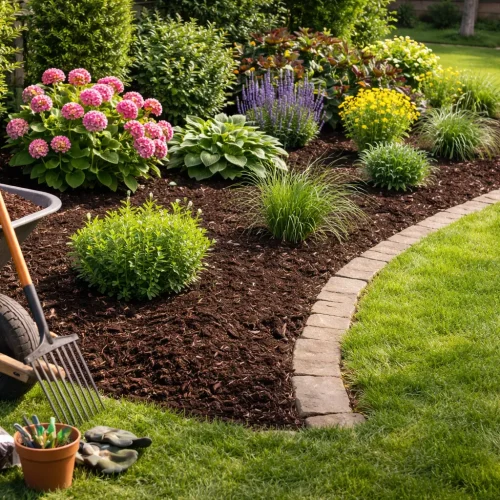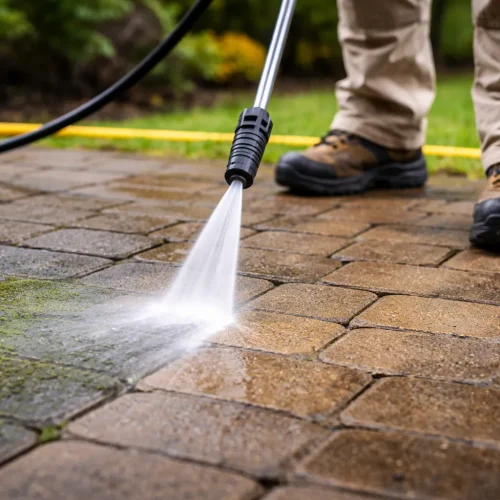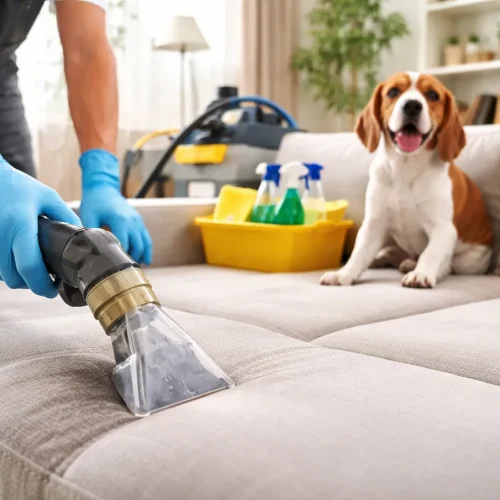
Is your beautiful engineered hardwood floor looking a little tired? Perhaps it’s showing signs of daily wear and tear, the scuffs, scratches, or just a general dullness that dims its once vibrant glow. Many people want to bring their engineered hardwood floor to life.
Homeowners in these situations ask the same question: Can I refinish engineered hardwood floors?
The short answer is Yes, but it’s essential to know how, why, and when it can be refinished. Otherwise, you might end up ruining your floor.
In this blog post, we will go over the essentials of refinishing engineered hardwood floors and what you need to recognize before proceeding
Understanding Engineered Hardwood Floors
Before we discuss refinishing, it’s significant to understand the anatomy of engineered wood flooring — and how it compares with traditional solid wood.
Disparate solid hardwood, engineered hardwood is not made from a single piece of wood. It has multiple layers of different materials. The top layer is known as the wear layer or veneer, which you see and walk on. This is the visible and most important part of the floor, made of the real wood species you wanted.
Why does this matter? The wear layer is the one that gets sanded down for refinishing. So, it determines whether or not you can safely refinish your floors.
Under the wear layer are some plywood layers, or high density fiberboard core (HDF), providing constancy and preventing the wood from growing and contracting with humidity. Some floors also have a soft underlayment layer for comfort and noise dampening.
How to Tell If I Can Refinish an Engineered Hardwood Floor?
Now, we know that engineered wood floors can be refinished and rubbed, but not all engineered floors are appropriate for refinishing. The width of the hardwood veneer or wear layer, the type of finish, and the current condition regulate if you can refinish the floor.
Veneer Thickness
A minimum thickness of 3mm is required to be refinished. Thinner than that, the sanding could wear through the hardwood, exposing the plywood or HDF core. Typically, the wear layer thickness of an engineered hardwood floor is between 1mm and 6 mm. This means that floors with a thick wear layer can be refinished multiple times, depending on their condition.
One refinishing removes about 1mm of wear layer, so if we do the math, here is the number of times you can refinish your engineered hardwood flooring.
- >2mm – Not recommended, leaves a very thin layer behind.
- 3mm – 1 to 2 times
- 4mm – 2 to 3 times
- 5mm – 3 to 4 times
- 6mm – 4 to 5 times
Current Condition of the Floor
Refinishing a severely damaged or worn engineered hardwood floor is not a good option. The process can remove light surface scratches and scuffs. But water-damaged planks often have cupped edges that cannot be sanded.
Similarly, uneven flooring can’t be sanded down, as dips within the flooring can cause much more of the wear layer to be removed than advised. Deep scratches, gouges, and stains may require removing more of the wear layer.
Type of Finish
The original finish on your floor plays a role in the decision. Most modern engineered hardwood has a durable factory-applied finish, such as aluminum oxide, which is incredibly tough. Polyurethane finishes are traditionally applied on-site and are an easy and durable option for professionals.
Hand-scraped engineered floors have another layer of complication, so you will be able to refinish these floors only once only if it has a thick wear layer.
How to Refinish Engineered Hardwood Floors
If you have confirmed that your engineered floors are thick enough, then it’s time to start the process. It closely mirrors the steps followed by solid hardwood refinishers but requires extra care.
Here’s how refinishing works.
- Preparation: Preparing the surface is an important task. So, before anything can be sanded, you must sweep the floor to remove any dust or debris. Then follow with a quick mop. Remember, it should be damp, not soaked in water.
- Sanding: The step requires a lot of care because you do not want to sand too far. If you are a beginner trying to DIY, we recommend an orbital sander. On the contrary, skilled and experienced craftsmen can opt for a belt or floor sander to speed up the process. The goal is to remove any old finish, not the entire wear layer.
- Staining: After sanding to fresh, bare hardwood, re-stain the floor to achieve the desired new color. Make sure you are staining it before applying the final coats.
- Finishing: Now apply new polyurethane finish coats to re-seal and protect the refinished wood surface. After that, you have to stay patient because the floor should be left to cure for at least 48 hours before it can be used. Be sure to ventilate the room well to boost the drying process and disperse fumes.
While the techniques are fairly similar to hardwood refinishing, engineered hardwood asks for precision due to veneer thickness constraints. We recommend hiring professionals for the job because sanding slightly harder can expose the core, especially if your floor has a thin wear layer.
What if Your Floor Can’t be Refinished?
If your engineered hardwood floor has a surface that is too thin to be refinished, replacement may be the smarter long term decision. For a deeper dive into whether to repair or fully replace wood flooring, You can find a variation of durable engineered hardwood flooring choices from trusted retailers like Royal Floors Online that offer authentic products for better longevity and future refinishing potential. For real-life inspiration, check out how one homeowner tackled their flooring update in this engineered hardwood refinishing story.
Here are some effective ways recommended by the experts to refresh and alter its appearance.
- Deep Cleaning and Coating: Deep cleaning followed by reapplying a clear polyurethane coating can revive some shine and protection.
- Refresher Products: Floor refreshers are specialized products that revive and protect previously finished floors without stripping and refinishing. When appropriately applied, the products tint and add subtle color over the existing stain.
- Glazes and Finishes: They can give your floors a new look. Semi-transparent wood glazes or tinted oil provide a substantial color shift when coated over the original stain.
These options cannot completely transform the colors like refinishing, but allow some flexibility to update the floor’s aesthetics when the veneer thickness is insufficient.
FAQs
You can easily buff out light scratches in your engineered wood floors. Before doing this, make sure that the scratch is only in the wood veneer and does not reach the core of the plank.
It depends on the finish you use. With oil finishes, you can introduce light furniture in 24 hours. However, heavy woodware is OK to return after 2-3 days. We suggest waiting 24 hours with lacquered floors.
Similarly, rugs and carpets should be placed back after one week. They are in close contact with the surface, which can affect the result.
Yes, you can, but we will never advise unless you have the knowledge, expertise, and the right tools for the job. There is a thin line between an effective refinish and ruining your floor; therefore, it is best to leave it up to experts.
If you are doing a full sand and refinish, you can stain the wood in a different color before the final topcoat is applied.
Conclusion
So, can you refinish engineered floors? In most cases, the answer is YES. Refinishing these floors can breathe new life into your old floors and give them a fresh look that will last for years to come.
So, now you know that dull and scratched floors are not an option. They diminish the room’s appearance and the property’s value. Take time to assess your floor’s condition, understand its construction, consider your options, and rejuvenate your engineered hardwood floors.
Author Bio
David Santiago is a flooring specialist and design consultant at Royal Floors Online with over a decade of hands-on experience in both residential and commercial spaces. He is passionate about helping homeowners make confident, stylish choices—from classic hardwood to modern luxury vinyl. When he’s not writing or consulting, he’s likely exploring the latest interior design trends or creating custom flooring solutions.












